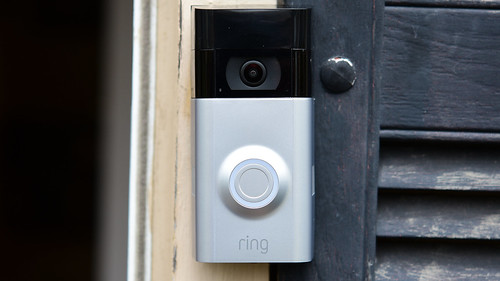
The growth in wind and solar installations in China could mean it hits 2030 targets five years early. CC-licensed photo by Land Rover Our PlanetLand Rover Our Planet on Flickr.
You can sign up to receive each day’s Start Up post by email. You’ll need to click a confirmation link, so no spam.
It’s Friday, so there’s another post due at the Social Warming Substack at about 0845 UK time.
A selection of 9 links for you. Use them wisely. I’m @charlesarthur on Twitter. On Mastodon: https://newsie.social/@charlesarthur. Observations and links welcome.
Bankrate posts AI-generated article, deletes it when we point out it’s full of errors • Futurism
Jon Christian:
»
With no fanfare, last week Bankrate quietly started posting new AI-generated articles once again — which it described in a disclaimer as “maintained by an in-house natural language generation platform using industry-standard databases” — suggesting that CNET could soon restart the program as well.
The new articles’ topics are mundane and clearly designed to capture readers searching Google for information, with titles like “Documents needed for mortgage preapproval” and “Best places to live in Colorado in 2023.”
With so many eyes on the company’s use of AI, you would expect that these first few new AI articles — at the very least — would be thoroughly scrutinized internally before publication. Instead, a basic examination reveals that the company’s AI is still making rudimentary mistakes, and that its human staff, nevermind the executives pushing the use of AI, are still not catching them before they end up in front of unsuspecting readers.
For example, consider that article about the best places to live in Colorado. It’s extremely easy to fact-check the AI’s claims, because the piece prominently features a link to a “methodology” page — evidently intended to bolster the site’s position in search engine results by signaling to entities like Google’s web crawler that its information is accurate — that documents precisely where the site is supposedly sourcing the data in its “Best places to live” articles.
Comparing the AI’s claims to that publicly-available data, here are some of the mistakes it made:
«
The list is then much too long to include here, and it’s pretty basic stuff that you’d expect a human – or a machine – to spot.
unique link to this extract
Apple’s Vision (Pro) of growth • Canalys
Jason Low and Nicole Peng:
»
Canalys forecasts that the Vision Pro and the related device lineup will reach a 20 million user base by the fifth year after the product launch in 2024.
…Despite the differentiated positioning, it is ultimately an XR [augmented/virtual reality] headset, which still comes with the same drawbacks and challenges that all the other vendors, such as Meta, HTC, Microsoft and Pico, have faced. Such compromises include:
• Friction to use brought on by the trouble of putting on a headset, on top of fit and comfort issues
• Social isolation as it is mainly a personal experience
• Social stigma of wearing an XR headset when people are around
• A lack of sticky, killer use cases that can drive mass adoption
• Not highly accessible to the masses due to high price points.Even so, Canalys believes Apple will surpass all other players in the XR field. Canalys forecasts that the Vision Pro and the related device lineup will reach a 20 million user base by the fifth year after the product launch in 2024. With the Vision Pro, Apple will once again show that a late market entry is no barrier to success, and Apple will own yet another new category.
By focusing on making the goggles a better MacBook, rather than trying to invent a new universe, Apple has shown that it understands the wants and needs of its next generation of customers. For comparison, 20 million users by the end of year five represents 15% of the MacBook installed base (Canalys estimates a MacBook installed base of 127 million at the end of 2022), and just 2% of the iPhone’s installed base.
«
20 million? At a few thousand per, that’s going to make the revenue from AirPods seem like small bananas.
unique link to this extract
Apple Vision Pro: a watershed moment for personal computing • MacStories
Federico Viticci:
»
I then watched a montage of clips recorded with Apple Immersive Video, which consists of 180-degree footage recorded in 8K. The best way I can describe these is that they were like a video version of the panoramas I mentioned above. Imagine a panoramic video that expands in front and around you, with fantastic display quality and spatial audio. The videos were so large and expansive, I felt like I was “in” them at several times, or at least very close to the action.
One moment I was flying over the ocean, the next I was watching a group of scientific researchers (I think?) in a jungle care for a rhino. As one of the women in the group started scratching the rhino’s nose, I could hear the sound of the rhino’s thick skin in my left ear since my head was turned in the opposite direction. Later in the video, another baby rhino came closer to me, and I instinctively went “aww” and reached out with my hand because I wanted to scratch its nose this time. The montage ended with a very intense, front-facing shot of a woman standing on a tightrope between mountains looking straight into my “eyes”. In that moment I looked down, afraid of the void, then back up again at her gaze, and the video cut to black.
Based on the two different video clips I saw, I have no doubt about the potential for entertainment and educational content on the Vision Pro.
…Lastly, I believe the Vision Pro’s immersive capabilities have a real shot at rejuvenating the market of mindfulness and meditation apps. In a 1-minute experience I had during my Vision Pro demo, I tested a version of Apple’s Mindfulness app for visionOS. As soon as I opened it, a sphere made of colored, translucent leaves appeared in front of me. As the sphere started pulsating and a guided voice told me to focus on my breath, the leaves started spreading around until the whole room grew dark and I was completely surrounded by colors.
I have to be honest: it felt nice. For just a few seconds, it was just me, soothing music, and a relaxing 3D visualization that gently engulfed me until I returned to the real world, ready to continue working my way through the demo.
«
OK, this is from a couple of weeks ago when the demos were new, but this seemed worth noting. Do click through to see how the tightrope sequence was captured. It’s breathtaking.
unique link to this extract
Ad-fraud claims could force Google to pay billions. But don’t hold your breath • Gizmodo
Thomas Germain:
»
A Google spokesperson pointed to a blog post addressing the allegations [about video ads not being shown to humans]. In short, Google said the report “used unreliable sampling and proxy methodologies and made extremely inaccurate claims about the Google Video Partner (GVP) network.”
Google said advertisers can choose whether or not the ads will appear exclusively on YouTube, or whether they can also run on the GVP network. The company said it uses third-party organizations to verify publishers follow Google’s standards. “In addition to the high bar we set on YouTube, we have strict policies that all third-party publishers, including Google Video Partners, must follow,” Google’s blog post said. “To give you a sense of how serious we are about this, in 2022 we stopped serving ads on more than 143,000 sites for violating our policies.”
Krzysztof Franaszek, founder of Adalytics, stands by the conclusions in the report. “Google’s rebuttal sidesteps most of the core issues we found,” Franaszek said.
For example, Google’s blog post argues that 90% of the ads it shows are “viewable,” meaning users see them, and advertisers don’t have to pay for ads that aren’t viewable. However, that’s an issue that isn’t even mentioned in the report, and it says nothing about ads playing in the outstream or with the sound off.
Google’s claim that the publishers it partners with are vetted and made to abide by strict policy guidelines stands in stark contrast to the report’s conclusions. To name just a few examples, the research documented ads running on Russian disinformation sites, as well as Android apps that are delisted or not allowed in Google’s own app store. Adalytics found Google serving ads with publishers based in countries that are sanctioned by the US Treasury Department, such as Iran. In other words, advertisers may be inadvertently funding entities sanctioned by the Government. The fact that Google had to pull ads from 143,000 sites for policy violations, by its own admission, is a sign that Google’s system isn’t catching problems before they happen.
«
There’s plenty more: it looks even worse than the Facebook video mis-measurement stuff.
unique link to this extract
February 2018: ‘NatWest closed my account with no explanation’ • The Guardian
Rupert Jones, in February 2018:
»
In March 2015, Money reported how economics professor Iraj Hashi had had his NatWest current account, savings accounts and credit card shut down with no explanation. The only reason he could think of was that he was born in Iran.
Last April the Guardian related how a UK law firm was handling more than 60 complaints by Iranian nationals who had had their UK accounts closed. Meanwhile the Guardian’s sister paper the Observer last year reported on the case of Mohammad Rahman, who had his bank accounts frozen and then closed by Barclays.
You can perhaps see a theme here: many of those affected are of Asian or African origin. So what’s going on? Welcome to the secretive world of bank “de-risking”.
In 2016, City regulator the Financial Conduct Authority (FCA) revealed that in recent years it had become aware that banks were withdrawing banking facilities from customers – or failing to offer them in the first place – in greater numbers than before. It said there was a perception that this was driven by banks’ concerns about the money laundering and terrorist financing risks posed by certain types of customer.
A 2016 report commissioned by the FCA revealed that, between them, two large (unnamed) UK banks were closing about 1,000 personal and 600 business/corporate accounts per month for “risk appetite-type reasons”.
It also revealed that the Financial Ombudsman Service (FOS) was dealing with 20 to 30 complaints a week about bank account closures. However, when Money spoke to the FOS this week, it estimated that the figure was now nearer 80-90 a week.
It follows that because countries deemed risky in terms of money laundering and financing terrorism tend to be Asian and African, people from these areas may be particularly vulnerable.
«
This is current again because Nigel Farage (afraid so) is complaining that his bank has closed his account. As (former Culture minister) Ed Vaizey pointed out, this is because he’s a Politically Exposed Person, which means banks get itchy about transactions. Perhaps he received some crypto, which is ringing all sorts of alarm bells at present. Even Vaizey, who’s about as upstanding as they come, has been affected.
unique link to this extract
China on course to hit wind and solar power target five years ahead of time • The Guardian
Amy Hawkins and Rachel Cheung:
»
China is set to double its capacity and produce 1,200 gigawatts of energy through wind and solar power by 2025, reaching its 2030 goal five years ahead of time, according to the report by Global Energy Monitor, a San Francisco-based NGO that tracks operating utility-scale wind and solar farms as well as future projects in the country.
It says that as of the first quarter of the year, China’s utility-scale solar capacity has reached 228GW, more than that of the rest of the world combined. The installations are concentrated in the country’s north and north-west provinces, such as Shanxi, Xinjiang and Hebei.
In addition, the group identified solar farms under construction that could add another 379GW in prospective capacity, triple that of the US and nearly double that of Europe.
China has also made huge strides in wind capacity: its combined onshore and offshore capacity now surpasses 310GW, double its 2017 level and roughly equivalent to the next top seven countries combined. With new projects in Inner Mongolia, Xinjiang, Gansu and along coastal areas, China is on course to add another 371GW before 2025, increasing the global wind fleet by nearly half.
…China’s green energy drive is part of its effort to meet dual carbon goals set out in 2020. As the world’s second largest economy, it is the biggest emitter of greenhouse gases and accounts for half of the world’s coal consumption. The Chinese president, Xi Jinping, pledged in 2020 to achieve peak CO2 emissions before 2030 and carbon neutrality by 2060.
«
Meanwhile the UK hasn’t authorised a single onshore wind farm for years.
unique link to this extract
Google to block access to Canadian news for anyone living in Canada • The Star
Raisa Patel:
»
Google has followed fellow tech giant Meta in announcing it will block Canadian news content from its search engine in Canada after days of negotiations with the Liberal government hit an impasse over its recently passed online news bill.
“We have been saying for over a year that this is the wrong approach to supporting journalism in Canada and may result in significant changes to our products,” a blog post from Kent Walker, the company’s president of global affairs, read Thursday.
“We have now informed the government that when the law takes effect, we unfortunately will have to remove links to Canadian news from our Search, News and Discover products in Canada, and that C-18 will also make it untenable for us to continue offering our Google News Showcase product in Canada.”
The Online News Act passed last Thursday and would force platforms like Google and Meta, Facebook and Instagram’s parent company, to strike deals with Canadian media publishers for sharing, previewing and directing users to online news content. The Liberals say the law is meant to end tech titans’ dominance of the digital advertising market, stating that in 2020, both platforms took in more than 80% of Canadian online advertising revenues as the country’s journalism industry faced hundreds of closures. Under the new framework, platforms would face financial penalties for failing to comply with the legislation.
A number of news publishers (including Torstar, which publishes the Toronto Star) have lobbied Ottawa in favour of the legislation, and already have deals in place with both companies for the sharing and repurposing of their content.
…On Tuesday, NordStar Capital — which owns the Toronto Star and Metroland Media — and Postmedia — which owns the National Post and daily newspapers across the country — shared news of a potential merger between the two companies. Two weeks earlier, CTV’s parent company announced it was slashing 1,300 positions and closing or selling nine radio stations.
It is believed that Google and Meta’s combined responses could result in millions of dollars in lost revenue for Canadian news publishers, possibly resulting in the shuttering of some smaller and independent outlets.
«
Comes into effect at the end of the year. News orgs backing these laws are turkeys voting for Christmas. As Benedict Evans says, just be honest and levy a tax on the digital giants.
unique link to this extract
Apple joins opposition to encrypted message app scanning • BBC
Chris Vallance:
»
Apple has criticised powers in the Online Safety Bill that could be used to force encrypted messaging tools like iMessage, WhatsApp and Signal to scan messages for child abuse material.
Its intervention comes as 80 organisations and tech experts have written to Technology Minister Chloe Smith urging a rethink on the powers.
Apple told the BBC the bill should be amended to protect encryption.
The government says companies must prevent child abuse on their platforms.
End-to-end encryption (E2EE) stops anyone but the sender and recipient reading the message. Police, the government and some high-profile child protection charities maintain the tech – used in apps such as WhatsApp and Apple’s iMessage – prevents law enforcement and the firms themselves from identifying the sharing of child sexual abuse material.
But in a statement Apple said: “End-to-end encryption is a critical capability that protects the privacy of journalists, human rights activists, and diplomats. It also helps everyday citizens defend themselves from surveillance, identity theft, fraud, and data breaches. The Online Safety Bill poses a serious threat to this protection, and could put UK citizens at greater risk.
“Apple urges the government to amend the bill to protect strong end-to-end encryption for the benefit of all.”
But the government told the BBC that “companies should only implement end-to-end encryption if they can simultaneously prevent abhorrent child sexual abuse on their platforms.”
«
Essentially, the government there demanding that tech companies take on the status and powers of gods, which is quite the ask. The real demand is to remove encryption from messaging. That toothpaste just isn’t going back in the tube.
unique link to this extract
Twitter’s new chief eases into the hot seat • NY Times
Ryan Mac, Tiffany Hsu and Benjamin Mullin:
»
Ms. Yaccarino, 60, has spoken with some of Twitter’s advertisers about unsavory content on the site, four people with knowledge of the conversations said. But she has not engaged in public hobnobbing and hands-on negotiating with advertisers to increase Twitter’s revenue.
That’s because a contractual agreement with NBCUniversal prevented Ms. Yaccarino — at least initially — from working on advertising deals that would conflict with the interests of her former employer, three people familiar with the arrangement said.
It is all part of an adjustment as Ms. Yaccarino settles into her new role and reports to a new boss. After working for traditional media organizations in New York for decades, she is now helping to lead a San Francisco-based social media company that has undergone rapid changes under Mr. Musk, who bought Twitter last year.Restricted from hammering out advertising deals, Ms. Yaccarino has instead repaired at least one relationship, between Twitter and Google; talked with regulators; and focused on employee morale. She has held happy hours and tried rallying workers with mission statements and more internal communication.
“Twitter is on a mission to become the world’s most accurate real-time information source and a global town square for communication,” she wrote this month in her first companywide email, which The New York Times obtained. “We’re on the precipice of making history.”
…Ms. Yaccarino has made progress in some areas, including helping to mend Twitter’s relationship with Google. That relationship frayed under Mr. Musk when Twitter partly stopped paying Google for cloud computing services. Twitter owed Google more than $42m in unpaid invoices and was trying to stop its use of Google’s products by the end of June, according to an internal memo obtained by The Times.
Ms. Yaccarino spoke this month to Thomas Kurian, the head of Google Cloud, to resolve the issue and ordered the bill paid, a person familiar with the conversation said.
«
Not sure about being on the precipice of world history. Precipices usually have abrupt downward drops.
unique link to this extract
| • Why do social networks drive us a little mad? • Why does angry content seem to dominate what we see? • How much of a role do algorithms play in affecting what we see and do online? • What can we do about it? • Did Facebook have any inkling of what was coming in Myanmar in 2016? Read Social Warming, my latest book, and find answers – and more. |
Errata, corrigenda and ai no corrida: none notified









